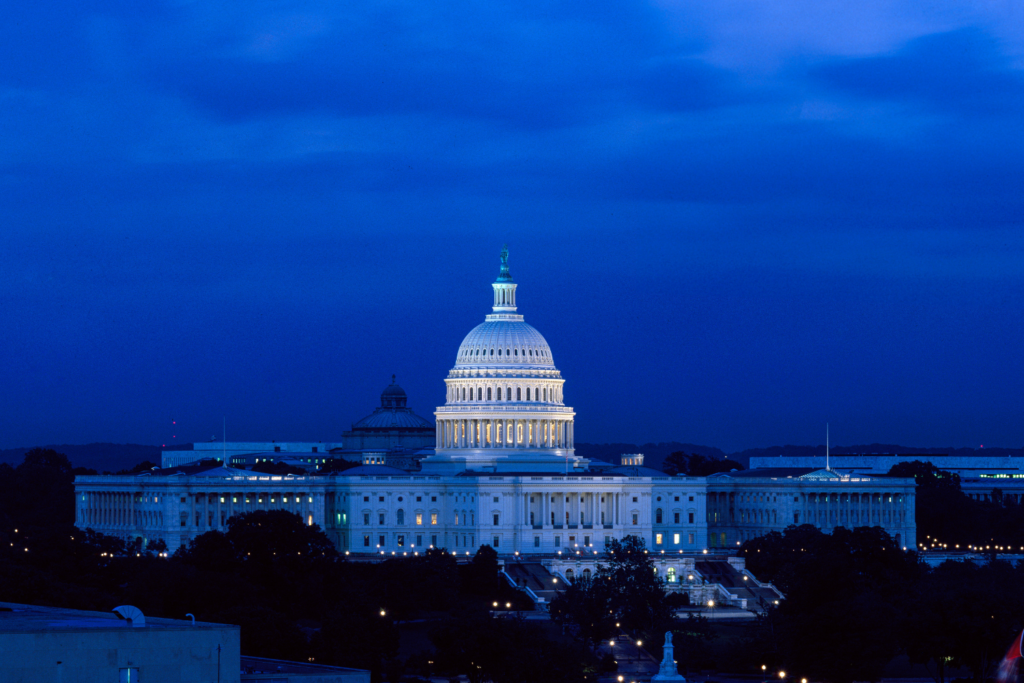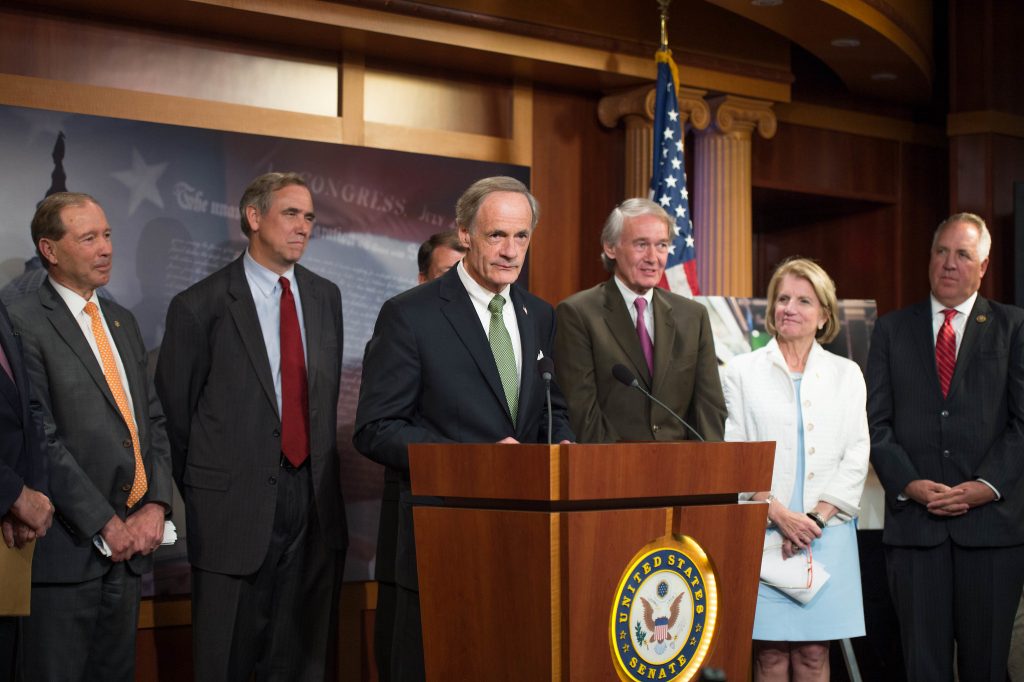
3 ways the Senate can pass bipartisan and effective transportation policy

We need you to take action to fix this broken bill. Send a message to your Senators TONIGHT > >
This past weekend, the Senate Environment and Public Works Committee released their proposal to reauthorize surface transportation policy for the next five years. The bill has bipartisan support, but it undermines both parties’ stated goals. A bipartisan and effective bill is possible—here’s how.

At Transportation for America, often our efforts to enact policies that actually connect people to jobs and services—not build new roads to nowhere—are stymied by “bipartisanship.” Or what people think is bipartisanship.
To us, bipartisanship isn’t passing transportation policy that just makes our problems worse, even if it undermines Republican and Democratic priorities equally as the status quo approach does. The Senate Environment and Public Works Committee is proposing more of the same. And where this new, bipartisan bill does seek to solve problems, it does so through several new and exciting, but toothless and/or underfunded programs.
Bipartisan legislation should solve problems, not make existing ones worse. And bipartisan transportation policy is possible—just ask the House Transportation and Infrastructure Committee, where freshmen members on both sides of the aisle joined together to pack their reauthorization proposal with programs that would fundamentally improve the federal transportation program.
Here are three bipartisan policies that we urge Senate Environment and Public Works Committee members to incorporate into their reauthorization proposal at mark-up tomorrow.
1. Fix-it-first
Lawmakers on both sides of the aisle have long-proclaimed the need to fix our “crumbling roads and bridges.” Yet despite continuously increasing federal transportation funding, this never gets accomplished—because states aren’t required to spend federal funding on maintenance before expansion.
The Senate EPW Committee should require that sponsors of roadway expansion projects demonstrate that they can operate and maintain what they are building while making improvements in the state of repair. This common sense amendment was proposed by a Democrat and Republican in the House Transportation and Infrastructure Committee last summer and passed by unanimous consent.
2. Measure and prioritize access equitably
The federal transportation program should prioritize investments that actually connect people to the things they need, by all modes. This is also called “getting the most bang for your buck.” Yet for decades, lawmakers on both sides of the aisle have agreed to focus on increasing vehicle speed by pouring money into expanded roadways—even though not every American can afford to own or operate a vehicle, and expanding roadways only makes traffic worse.
Measuring access to jobs and essential services and targeting federal funds to projects that improve access should be something that both political parties can enthusiastically support. It ensures that federal funds aren’t wasted and that funding can be equitably spent on rural access by developing a better understanding of rural transportation needs through data. It also improves access to the economy particularly for low-income people, communities of color, and people with disabilities. It is modern and makes more sense to the taxpayer than “delay” and “level of service.”
3. Prohibit negative safety targets
The number of people killed while walking is skyrocketing, but particularly in southern and Sun Belt states like Florida, New Mexico, and Alabama. Yet current law allows states to plan for more people to be killed than in the previous year with no penalties.
Prohibiting states from setting these destructive negative safety targets can be an easy issue for both parties to agree on. It would also make a huge difference in incentivizing states to spend Highway Safety Improvement Program funds on safety improvements for people who bike and walk.
Bipartisanship is only good if it produces good legislation
Ultimately, achieving Democrats and Republicans’ transportation goals doesn’t require vastly different policy proposals. Here’s what we wrote on the Senate Environment and Public Works Committee’s very similar 2019 bill:
“While Republicans say their priority is to reduce demand for federal spending, avoid wasteful spending and efficiently move goods to market, the current program and the bill they passed fails to do so. While Democrats claim to want to create jobs, reduce emissions, and build a strong and fair economy, the current program and the bill they passed fails to do so.”
Achieving all of this is possible by fundamentally updating the federal transportation program to finally invest in getting people where they need to go by all modes, safely, sustainably, conveniently, equitably, and affordably.
Passing a status quo bill that just makes congestion worse, our streets less safe, our emissions higher, and access to opportunities more inequitable is not the bipartisan deal we should accept. This is not something to praise or be excited about.
We must hold both parties to a higher standard: because a bipartisan and effective bill is more than possible.



